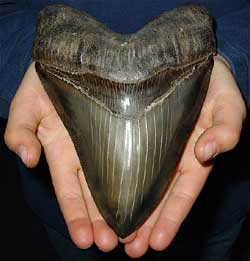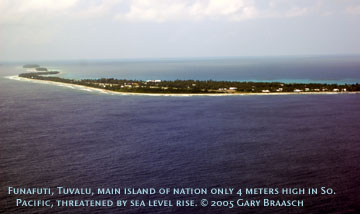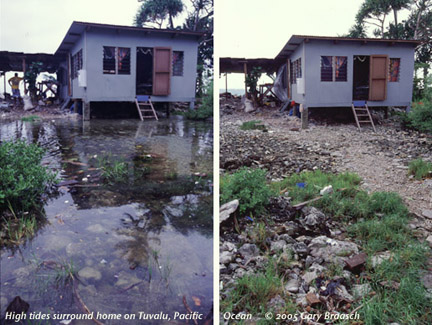
Well, today this subject came up in the lab, I am not quite sure how, but I figured I would talk about them tonight. Oysters in many areas, most notably (at least publicly) in Chesapeake Bay, form large 3-D solid reef structures or bars. They are created by oysters, which settle onto hard subtrates, settle and grow on top of pre-existing oysters, and layer on top of layer growing upwards and outwards. Over thousands of years (which could be destroyed in mere decades), these oysters can create a rather complex habitat. These reefs area often self-maintaining (although with oyster harvest it becomes harder) and can occur subtidally (less than 2 meters) up to 30 meters of water. They are also found most prominently at the mouths of rivers in estuaries (as they require slightly lower salinities than many other marine bivalves).
They are very important for a few reasons. Vitally important to the overall health of the estuary, oysters filter very high volumes of water, and oyster reefs in full capacity can filter volumes of whole bays in hours if not in days. By filtering out phytoplankton, oyster reefs increase water quality and clarity, which in turn, allows other important species, like seagrasses, to grow. However, oyster reefs are also very important in terms as habitat for many species of finfish, other shellfish and crustaceans, especially many commercially and recreationally important species. The reefs serve as predation refuges, nursery habitats and feeding spots.
Despite these importance to the health of the ecosystem, these reefs have been in decline, particularly in the Chesapeake, over the past 100 years. Many causes are pollution, disease, and harvesting. I am also quite certain they were removed as navigation hazards as well. As more is learned about their importance, more work is being done to restore these reefs. To learn more about their importance of oyster reefs and their restoration, go to the
Chesapeake Bay Program site.
I know that much of the information about oyster reefs is from the Chesapeake, but they also occur down in Florida, where I have experienced them firsthand. While the area I have seen them was Lostman's River, in the Everglades, is very turbid, we could feel them scraping the bottom of our boat as we were motoring (stupidly, mind you, but I am not allowed to drive, so I have no control about that really) over them. When we get some of our preliminary numbers, I will update about what animals we found at what densities, just to give some comparisons to back up their importance. There is a little grass up there, but the water is still very turbid. This is mostly because water leaving the Everglades often has a lot of sediment. Anyways, just so you all have a good story to leave with, after running over the beds, we messed up the motor (obviously). Now it was no longer peeing, and we could not flush it, so it was soon overheating. This, mind you, is late in the afternoon (4:00-4:30) and we are still an hour and a half from the ranger station when the boat is working properly. However, now we can't run the boat (a 23 foot parker) and we have to tow it with a 17 foot mako, so we cannot get up on plane. This creates problem because behind us is a squall (miles behind us but we cannot go very fast, mind you) and dark is approaching. To top it all off, we have no lights (other than a spotlight flashlight that won't last long) and going back through the Everglades canals during the day is hard enough, but in the dark was even more difficult. Plus, the mako doesn't have enough gas to make it all the way back with a boat in tow. We make it about 2/3 of the way back and now its like 930-10 (not really sure), and we finally run out. Now we need to siphon gas from the parker to put into the mako. Which we did, and the squall luckily did not follow us, we got to dry land by 1130 and it was still a 45 minute ride out of the park to our hotel, where we would have to wake up at 6 am to do it all again the next day.





























